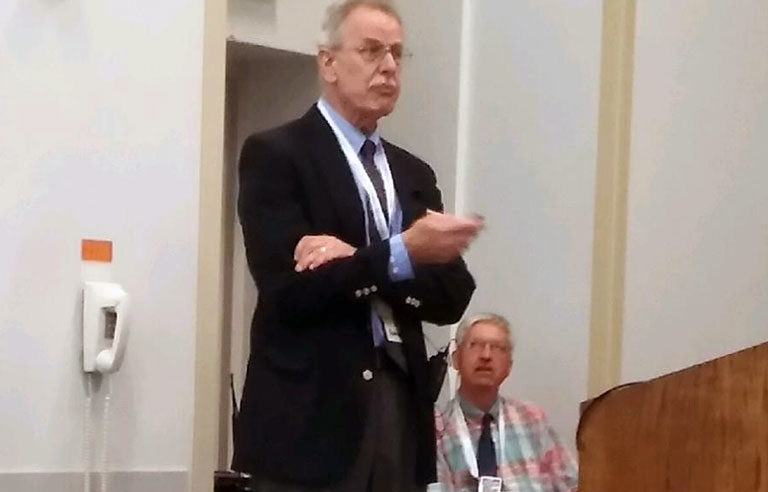Case involving meat blender and double amputation among ‘most interesting’ at OSHA session

Mel McCrary, OSHA compliance officer, presenting during the "OSHA Interesting Cases" Technical Session at the 2016 NSC Congress & Expo
Anaheim, CA – Various out-of-the-ordinary OSHA investigations, including one case involving a meat blender that resulted in a double amputation for a worker at a processing plant, were detailed by a panel of agency personnel Tuesday during a “most interesting cases” Technical Session at the 2016 NSC Congress & Expo.
Mel McCrary, a compliance officer with OSHA’s office in Kansas City, MO, told attendees about one incident in which the unexpected energization of a meat blender entangled a hose and a 26-year-old male sanitation worker – whose arms were amputated below his elbows. They were later reattached.
At the time of the incident, the sanitation worker was cleaning a blender capable of processing 8,000 pounds of meat at once, McCrary said. A hopper normally would be in place to evacuate the meat, but the company had ordered modifications to the blender that included the installation of a computer control system with vat proximity sensors, which detect metal within a certain distance from the sensor’s face. If the vat is in place, that would satisfy the computers in the same way magnetic interlocks on a hopper would, McCrary said.
The worker thought he was protected with the blender under sanitation mode, but after about an hour, the timer shifted it into discharge mode while the worker's hose and arms were inside the discharge area. When that happened, the blender's paddles entered full rotation without warning and the discharge doors remained open, McCrary said.
OSHA issued multiple Lockout/Tagout citations, including those addressing inadequate written procedures, lack of effective annual reviews, lack of effective training and lack of Lockout/Tagout verifications by an authorized employee. OSHA also issued a machine guarding citation because vats were used instead of hoppers, which physically guarded the discharge area.
Employers must comply with OSHA standards for Machinery and Machine Guarding (1910.212), Hand Protection (1910.138) and Control of Hazardous Energy (1910.147) to protect workers from potential hazards.
Post a comment to this article
Safety+Health welcomes comments that promote respectful dialogue. Please stay on topic. Comments that contain personal attacks, profanity or abusive language – or those aggressively promoting products or services – will be removed. We reserve the right to determine which comments violate our comment policy. (Anonymous comments are welcome; merely skip the “name” field in the comment box. An email address is required but will not be included with your comment.)

